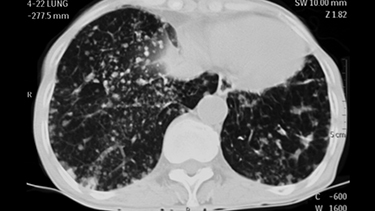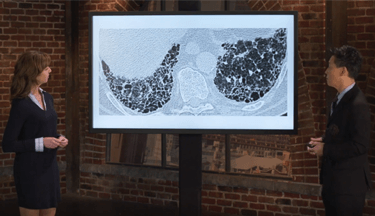Exposure-Related ILD/Drug-Associated - Diagnosis
DIAGNOSIS
- Identification of offending drug and history of drug exposure3
- Clinical, imaging, and histopathologic patterns consistent with identified drug3
- Exclusion of other pulmonary disease3
- Improvement after drug is discontinued3
- Recurrence of symptoms if/when drug is rechallenged3
- May lack distinct clinical, radiographic, or pathologic diagnostic patterns3
- HRCT can detect abnormalities in patients with normal or non-distinguishing radiographs, but also only comes with 45% accuracy in predicting a specific pattern of drug-induced ILD4
- Diagnosis can be confirmed if there is an established association between time of exposure to offending agent and development of respiratory signs and symptoms
SYMPTOMS
- Nonspecific signs and symptoms4
- Cough
- Fever
- Dyspnea
- Hypoxemia
- Pleuritic chest pain
- Symptoms typically subside upon drug withdrawal4
- Drug-induced ILD can be mild or severe, ranging from manageable disease to respiratory failure or acute respiratory distress syndrome4
VARIOUS TYPES OF ILD CAN PRESENT WITH DRUG-INDUCED ILD:4
| Clinical Manifestations of Drug-Induced ILD | |
|---|---|
|
Eosinophilic pneumonia (EP) |
|
Organizing pneumonia (OP) |
|
|
|
Diffuse alveolar damage (DAD) |
| Granulomatous lung disease | Hypersensitivity pneumonia (HP) |
CERTAIN DRUGS ARE ASSOCIATED WITH PARTICULAR CLINICAL PATTERNS:4
- Minocycline, nitrofurantoin, and methotrexate: eosinophilic pneumonia, granulomatous ILD, nonspecific pneumonia
- Amiodarone and bleomycin: multiple histologic patterns


